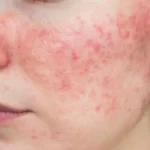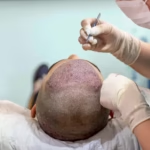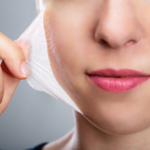Acne is a common skin condition, and while the active breakouts may eventually subside, some individuals are left with scars. These marks can impact self-image and quality of life, but modern dermatological treatments offer effective solutions. Acne scar correction provides various methods to reduce the appearance of these marks and restore a smoother skin texture. Understanding your options can help you make informed decisions about your skincare journey.
What Is Acne?
Acne is a common skin condition that occurs when hair follicles become clogged with oil, dead skin cells, and bacteria. This inflammatory condition primarily affects areas with a high concentration of sebaceous glands, including the face, chest, back, and shoulders. The condition ranges from mild blackheads and whiteheads to severe cystic lesions that penetrate deep into the skin.
The inflammatory nature of acne can damage the surrounding skin tissue, particularly when lesions are severe or when individuals pick at or squeeze their blemishes. This tissue damage often results in permanent scarring that persists long after active acne resolves, and these scars take various forms depending on the type and severity of the original inflammation. Scar correction techniques help alleviate the appearance of acne scarring.
What Causes Acne Scars?
Acne scars develop when the skin’s normal healing process is disrupted during or after an inflammatory acne breakout. The body produces collagen to repair damaged tissue, but sometimes this process doesn’t work correctly, leading to either too little or too much collagen production. When insufficient collagen is produced, atrophic scars form as depressions, while excess collagen production leads to raised hypertrophic scars.
What Is Scar Correction?
Scar correction encompasses various cosmetic procedures designed to improve the appearance of acne scars and restore a smoother skin texture. These treatments work through different mechanisms, including stimulating collagen production, removing damaged skin layers, or physically restructuring scar tissue. The specific approach depends on scar type, skin condition, and individual patient factors.
Professional scar correction treatments include laser therapy, chemical peels, microneedling, and dermal fillers. Laser treatments use focused light energy to stimulate collagen production and resurface damaged skin, while chemical peels remove the outer layers of the skin to reveal healthier tissue beneath. Microneedling creates controlled micro-injuries to promote natural healing and collagen formation.
Dermatologists and qualified skincare professionals typically perform these procedures in clinical settings using specialized equipment and techniques. Treatment plans are customized based on individual scar patterns, skin type, and desired outcomes, and most procedures require multiple sessions spaced several weeks apart to achieve the desired results. Consulting a dermatologist helps determine which treatment is most suited to each situation.
What Are the Benefits?
Scar correction treatments can improve skin texture, tone, and overall appearance for individuals affected by acne scarring. These procedures help reduce the depth and visibility of scars, creating a smoother, more even skin surface that better reflects light. Clearer skin can boost self-image and improve quality of life.
Modern techniques provide long-lasting results when performed by qualified professionals using appropriate methods for each scar type. Some treatments also stimulate ongoing collagen production, which can continue improving skin texture for months after the initial procedure. The versatility of available treatments enables dermatologists to create comprehensive treatment plans that address multiple concerns.
Visit a Dermatologist Today
Acne scar correction offers solutions for individuals struggling with the lasting effects of acne breakouts. Schedule a consultation with a dermatologist to explore your scar correction options and develop a personalized treatment plan. Professional guidance can help you understand which treatments are most likely to benefit your specific situation, and early intervention may lead to better outcomes with fewer required sessions.









